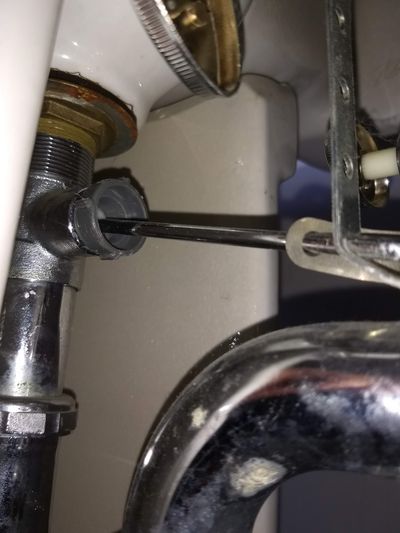Ask the Builder: Plumbing repairs can be made by yourself

Q. Tim, I’ve got several plumbing repairs to make, and I just don’t have the money to hire a plumber. The water in my bathroom vanity sink drains slower than molasses. Just a year ago, it drained really fast.
Sometimes, my toilet gets clogged, and I think it’s disgusting to use a plunger. Is there another way to unclog a toilet? Lastly, my shower head used to have a nice spray pattern, but now water doesn’t come out evenly, and the pressure is reduced. Is there an easy repair for this? – Carol F., Spokane
A. I’ve been a master plumber since age 29, and plumbing has always fascinated me because it’s a great exercise in three-dimensional puzzle-solving. It’s got lots of physics going on, too.
Two years ago, I had a blast setting up a giant test structure in my driveway to record a video about what happens to flushable wipes when you send them on the journey to your sewer connection or septic tank. You can see the video on askthebuilder.com.
If you have a slow vanity drain, it’s likely that hair and other gunk are creating a blockage at the bottom of the drain stopper. It’s a common problem, and all sorts of tools exist to try to get you to solve the problem without taking apart the drain. These tools do a so-so job, but it’s better to just remove the drain stopper and get the drain perfectly clean.
If you look under the sink and behind it, you’ll discover a weird mechanism that operates the stopper. A horizontal rod is connected to the decorative rod up behind the faucet that allows you to lift and drop the stopper.
You need to remove the horizontal rod where it goes into the drainpipe. Channel-lock pliers are all you need to rotate the round nut counterclockwise. Once the nut is loose, the horizontal rod can be pulled out of the pipe and from the hole in the bottom of the drain stopper. Remove the stopper, and all sorts of hair and gunk will come up with it.
The other benefit of removing the stopper is you can clean the sidewalls of the drainpipe tailpiece that extends from the sink down to the p-trap under the sink. The sidewalls of this narrow pipe get coated with a foul biofilm that can create a horrible smell when you run water in the sink.
I use a bottle brush and liquid dish soap to clean the pipe as water is running in the sink. Make sure the bottle brush is long enough to extend down to the p-trap. Put a piece of duct tape over the hole where the horizontal rod came out of the pipe so you don’t get water under the vanity as you clean the pipe.
Did you know you often don’t need a plunger to unclog a toilet? You just need about four gallons of water in a big bucket. Remember this formula from high school physics class: Force equals mass times acceleration.
Water has lots of mass and weight. If you pour water into a toilet bowl fast, you’re accelerating it. This will force the toilet paper and body waste through the colon of the toilet in almost all cases. Just pour the water into the bowl as fast as possible making sure it doesn’t overflow onto the floor. I have a video on askthebuilder.com showing exactly how to do this. Thousands of people have commented and thanked me because they also hate using a plunger.
That pesky shower head that has gotten lazy is easy to fix. Hard-water deposits are almost always to blame for reduced flow and pressure. Each time you take a shower, the water drops evaporate on the end of the showerhead, leaving behind a tiny amount of salt. After many showers, these deposits build up and start to restrict the flow through the holes at the end of the showerhead.
If you don’t want to remove the showerhead from the gooseneck pipe that goes into the wall, fill a plastic sandwich bag with enough white vinegar so the end of the showerhead is soaking in the vinegar. Point the showerhead down before you use rubber bands to hold the plastic bag in place.
Remember your high school chemistry class? Acids are good at dissolving salts. White vinegar is a weak acid and does a marvelous job of removing hard-water deposits and stains on countertops and faucets. Allow the white vinegar in the bag to work its magic for as many hours as possible. After soaking, you might want to poke a toothpick into the holes in the showerhead. I guarantee you the water flow will return to normal.
Keep in mind if you have tougher plumbing problems, you and I can talk on the phone. I do offer that service no matter where you live. Just a month ago, I helped Nick with a problem in his Monaco condominium!
Subscribe to Tim Carter’s free newsletter and listen to his podcasts at askthebuilder.com.